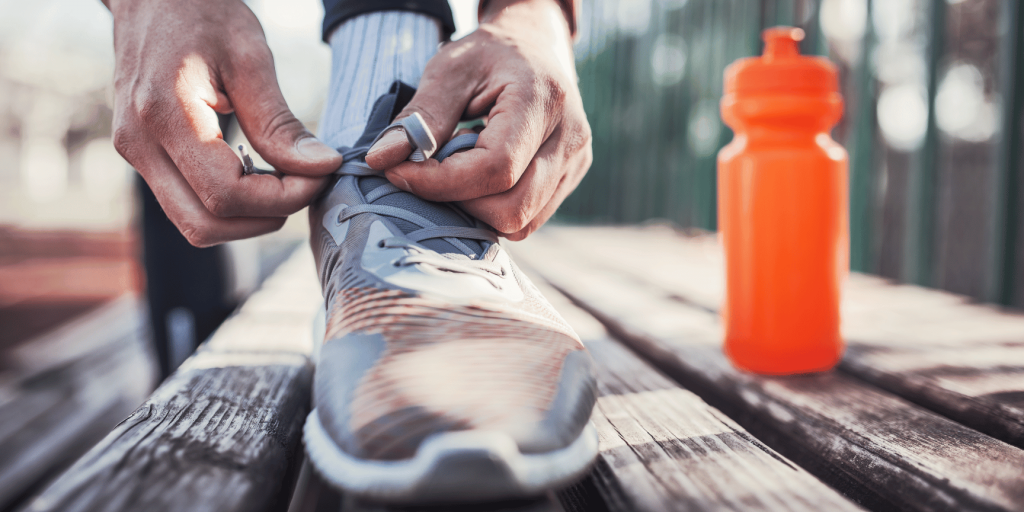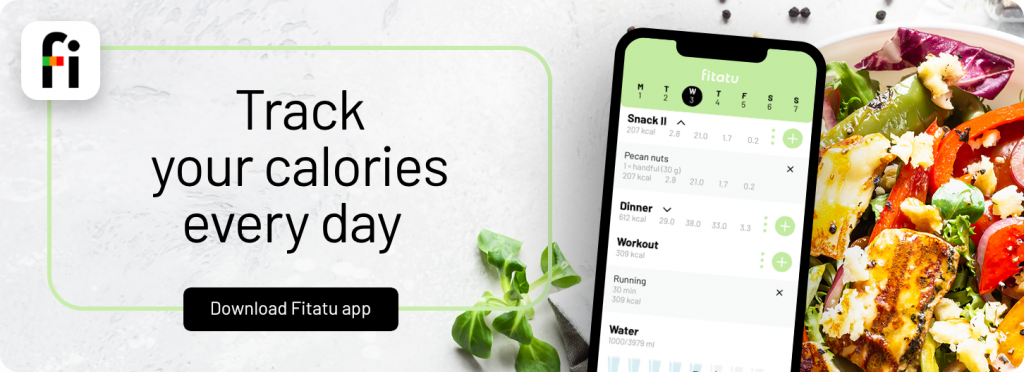Physical activity – how to determine its level?

The physical activity consists of training activity and spontaneous activity (NEAT). Although it is the training activity that seems to be the most important, it actually takes up much less time on a weekly basis than spontaneous activity. Find out which type of activity is more important and determine your physical activity level.
Correctly determining the level of physical activity is crucial in determining a person’s energy requirements. So how should you approach it? Is 10,000 steps a day a lot or a little? What if you don’t have time to work out, but are busy with the house and children all day? Let’s take a closer look at this.
NEAT, or spontaneous activity
Physical activity levels consist of both workout and non-workout activities, also often referred to as spontaneous activity (NEAT). At first glance, it may seem that training activity is the more important one. However, if we look into it, we can see that the training activity takes up relatively little time from the perspective of the whole week. It differs from spontaneous activity, which fills the rest of our day.
Spontaneous physical activity – what does it consist of?
Spontaneous activities are all those activities that we most often do not think about. These include:
- type of work (sedentary, physical labor),
- the way we get around (driving or taking public transportation, walking, cycling),
- activity at home (cleaning, playing with children, watching TV, sitting in front of the computer).
Due to the various factors that make up non-exercise activity thermogenesis (NEAT), the energy expenditure associated with it can vary significantly between individuals. For those doing sedentary work, it will be a maximum of 700 kcal, for those working in a standing position, up to approx. 1,400 kcal, while for those doing physical labor, it can reach a value of up to about 2,000 kcal per day.
Physical activity – how to determine its level during the day?
To determine the level of physical activity, it is best to determine the value of the Physical Activity Level (PAL). It indicates the level of physical activity. It is expressed by a number and used to calculate the Total Body Metabolism (CPM). You can read more about calculating CPM in the article How to calculate your caloric needs correctly?, but today we will look at how to determine your physical activity level properly.
PAL, or physical activity factor
Sometimes, especially at the beginning of the road to a healthy lifestyle, it can be difficult to determine the level of physical activity. To make it easier for Fitatu® users to choose a PAL index, we present it in the app not by a number, but by a name that corresponds to a number, i.e. very low, low, medium, or high. In the table below you will find a detailed, expanded description of the activity for each level. As in the app, we have divided it into training activity and spontaneous activity during the day, so it will be easier to find the level that corresponds to you and mark it correctly in the app.
| ame of the activity level in Fitatu | Examples of training activity (per week) for a given level | Examples of activity during the day for a given level |
| Very low | – no training | – a maximum of 3,000 steps per day – light housework (max 1h) |
| Low | – 1x moderate workout of about 1h (e.g., bicycle, orbiter, pilates, recreational swimming) – 3x light and short workouts of up to 30 min – 2x moderate-intensity workouts of up to about 30 min | – daily walking (about 3-5 thousand steps per day) – light housework and short walks several times a week – all-day and daily care and play with the child and short walks |
| Medium | – 4-5x moderate intensity workouts (e.g., HIIT, tabata) – 3x intense workouts (e.g. EMOM, strength training, HIIT, tabata, running about 10 km) – daily walks of min. 10,000 steps | – standing work (e.g., hairdresser, expeditor/woman, etc.), daily walking (up to 5 thousand steps a day) – standing work and daily play with a child after work |
| High | – 6-7 intense workouts lasting min 1h – 4x a week running more than 15 km | – physical work (such as carrying heavy objects for hours) |
If you are curious about practical examples of combinations of workout and spontaneous activity during the day and what PAL corresponds to them, then take a look at the table below. Remember that these are only the most common examples, and if you can’t find yours, try to think which situation is most similar to yours.
| PAL | Physical activity level (Examples of combinations of training and daily activity) |
| 1.4 | – 1 workout/week of moderate intensity, office work, mode of communication – car, occasional and short walks during the week (max up to 3 thousand steps per day) – no training, office work, daily short walks (max 3 thousand steps per day) |
| 1.5 | – 2x training/week of moderate intensity, office work (3-5 thousand steps per day) – 1x training/week, office work, walking (3-5 thousand steps per day) – no training, office work, walking daily (7-10 thousand steps) – no training, standing work (e.g., hairdresser), walking (max 3 thousand steps) |
| 1.6 | – 2x intensive training/week (e.g., strength training, running about 10 km), office work, daily walks (about 3 thousand steps) – 2x moderate training/week, standing work – 3x light to moderate training/week, office work, daily walking (3-5 thousand steps) – 5x light and short (about 15-20 min) training/week, standing work or walking 3-5 thousand steps daily – no training, light physical work such as in a warehouse |
| 1.7 | – 4x intensive training/week, daily housework and/or playing with children – 3x intensive training/week, daily walking (5-7 thousand steps per day) – 3x intensive training/week, daily walks (up to 5,000 steps), daily play with young children and/or light housework – no training, heavy physical labor |
| 1.8 | – 5x intensive training/week, daily housework and/or playing with children – 5x intensive training/week, daily walking (5-7k steps per day) – moderate training 1-2x/week, heavy physical labor – no training, heavy physical work, household chores and/or taking care of young children |
| 2.0 | – daily workouts, heavy physical work – daily heavy training, light housework and/or care of young children |
| 2.2 | – daily heavy training 2x a day (e.g., training of professional athletes) – daily heavy training and heavy physical labor |
The descriptions shown in the table are, of course, only examples to help you estimate your activity level. However, you should not stubbornly look only at the numbers, but first and foremost listen to your body, which knows best what it needs.
If the methods described above do not prove sufficient to determine the level of physical activity, it is best to seek advice from an experienced professional – a nutritionist and/or trainer.

WHO report on physical activity levels around the world
WHO recommendations on activity levels
The World Health Organization (WHO) for people between the ages of 18-64 recommends:
- at least 150-300 minutes of moderate-intensity aerobic physical activity or at least 75-150 minutes of vigorous-intensity aerobic physical activity (or an equivalent combination of the two) per week,
- a minimum of 2 days a week performing muscle strengthening exercises of moderate or higher intensity that engage all major muscle groups,
- extending the moderate-intensity aerobic physical activity to more than 300 minutes, and extending the high-intensity aerobic physical activity to more than 150 minutes for additional health benefits (weekly),
- reducing time spent sitting and replacing it with physical activity of any intensity (including light physical activity).
Immobility is a health risk
According to the World Health Organization (WHO), one in four adults worldwide is insufficiently active to stay healthy. So how can you effectively increase your level of physical activity throughout the day? Find an activity you enjoy and just start moving. If you are not yet ready to decide on a specific activity, then increase the level of spontaneous activity. Just walk to work, bike to work, or get off the bus a stop earlier and walk to work. You can walk to get groceries instead of driving. You can take the stairs to your apartment instead of taking the elevator. All these small choices matter and will benefit your health and well-being.
Fitatu® Support Group
Join the Fitatu support group on Facebook and achieve your goals with us! Group participants motivate each other daily, support each other in moments of weakness, and share recipes for delicious meals. Recently, a Fitatu® nutritionist has also joined the group to share her knowledge, as well as point the way forward when someone gets lost on their path to success.
Fitatu® app
Download the app from the Play Store or Apple Store and start counting your macros with us! Fitatu® will help you determine your needs and motivate you to achieve success. Now you can additionally use the code ACTIVITY-K. Go to https://www.fitatu.com/app/order-and-payment and get an additional 20% discount on Fitatu® Premium annual plans. The code combines with other promotions.
What else can you find in Fitatu® Premium?
- More than 2,000 recipes plus dozens of new ones every month,
- additional intermittent fasting plans,
- the ability to create shopping lists,
- pre-made menus with meals,
- filtering of products and recipes,
- more synchronization with fit apps,
- web-based access to the app,
- no ads!
Bibliography:
- https://ncez.pzh.gov.pl/aktywnosc-fizyczna/osoby-dorosle/spontaniczna-aktywnosc-fizyczna-w-prewencji-otylosci/
- https://www.who.int/news-room/fact-sheets/detail/physical-activity
- Celejowa I.: Teoria i praktyka żywienia sportowców. Wyd. AWF w Gdańsku, Gdańsk 1983: 24–27





